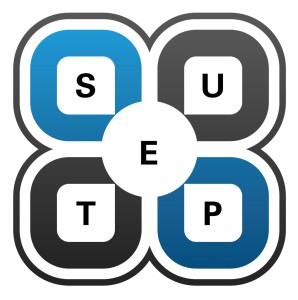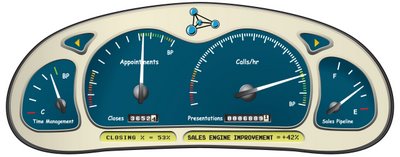What you need in the field for a successful Sales Blitz!
In a Sales Blitz every door is an opportunity and if your salespeople aren’t properly equipped they can miss it.
How to Organize for Success in a Sales Blitz!
Blitzes can be a source of HUGE immediate sales and long term changing of your business normal but only if they are planned and handled right.
If your reps are spending their time driving around lost the company loses. Set them up for success and have a solid plan, and it all starts with the territory they will be calling on.
Sales….. Like Lightning
“How can we achieve a near-term sales increase combined with long-term sustainable revenue growth?”
This is a question that hangs in the air during virtually every conversation between owners, C-Level and Sales Management. One of the tried and true methods to achieve at least half of the equation is to conduct a sales blitz. The trick is how do you morph a temporary sales boost into the “new normal”?
A sales blitz is designed to fulfill the urgent need of increasing sales pipelines immediately. And most sales organizations know the basic “flavors” of blitzes with formats being designed for, at best, impermanent returns. I say both goals of an immediate sales bump and establishing the “new normal” are possible.
It’s a challenge melding lead generation, continual development training and motivational sales meetings, I grant you, but if you run a Blitz using this system be prepared for a revenue growing, “sales climate changing” event.
 S.E.T.U.P. your team for success
S.E.T.U.P. your team for success
Strategy
This step should start minimally 60 days before the blitz. Map out EVERY detail from the initial touch, phone dial, live visit, all follow-up and ongoing relationship builders and more. At the planning meeting ask these questions:
-
What market/area are you attempt to penetrate?
-
What is the goal(s) of the blitz? Short term, Mid Term and Long Term?
-
How can you warm up the market/area you will be blitzing?
-
What will you use to warm them up? What frequency? What platform?
-
What products fit/are most desired by this market?
-
What vendors should you team with?
-
What should your teams have with them? Brochures? Giveaways?
-
What will be the competition’s reaction?
These questions are a great starting point but you have to go deeper yet. We all know long term sales success is about the grind. Doing the little things everyday that build best practice habits that ultimately pay off. It’s the same here only we need to “microwave” the process a bit.
Education
Day 60 should begin with teaching of an effective lead generation system and every system is made up of 3 things, tactics, strategy and learned skills.
Many of the tactics and strategies that need to be adopted are here https://matriximpact.com/site/?p=1125.
Your team also need SPECIFIC skills. Those skills need to be practiced in real-life simulations tightly tied to the reality they will experience. Here are 5 of the skills that will be required of anyone participating in the Blitz.
-
Client research and its application
-
Tele-Sales: Warming up the drop-in
-
Lobby Intro: Getting past the Gate Keeper or at least gaining needed info
-
Benefit Value Discussion: Setting the hook to continue the discussion
-
Facility Walk-through Technique: How do you maximize contact with the right person?
-
Wrapping up the visit: Very few drop-ins will result in a sale. The real goal is increase and expand in your sales pipeline
There should be a regular schedule of training leading up to the Blitz event. Refresher classes, reviews and Blitz day reminders for everybody involved. This is why there needs to be a Blitz QB. One who can coordinate information, learning and distribution for all the Blitz teams.
Tools
There are many tools needed for a successful Blitz. Call Template, all lead generation letters, impact touches, pairing maps, company intelligence, handouts, giveaways schedules and more, all customized for your business and for the goal of your Blitz.
The key is to be prepared and start the assembling of your tools sooner rather than later.
Users & Interface
Everything management does HAS TO BE hands-on. Management needs to be the great guiding hand in the structure of the Blitz but it also needs to be a participant during the Blitz days. I have had everyone from Middle Managers to Vice President’s of Sales to Owners come up to me after a Blitz and effusively say “John, thank you for making sure I was on a Blitz team”.
Think about it. They get out of the office routine of meetings and problems and get to spend minimum 2 days with sales people and customers. They find out what the ground troops do on an everyday basis and what has changed over the years. They hear first hand customer’s issues and concerns. It can reinvigorate the most curmudgeonly of management and this isn’t even the best reason.
When a prospect/customer is introduced to the Vice President or Owner the look on their face is priceless. I mean WOW, the VP or Owner took time out of her/his day to come and visit. Few gestures have a greater customer service impact than this.
Sales people MUST take ownership as well. They have to be involved in all strategy discussions. There a a multitude of tasks that need to be divvied up among the sales team. A sales person has to be the in-office Blitz QB. This is a critical position. Their job is to coordinate all activity. They have to stay in touch with the teams and provide updates. They are also troubleshooters as opportunities or problems come up. Depending on the size of the blitz you can have as many 2 or 3 QB’s to ensure you have proper support.
The bottom-line: from ownership to front-line sales, everybody plays a crucial role in the execution of a successful Blitz .
Performance
This is what it is all about! You need to GUARANTEE your team is prepared, practiced and energized. If you do you will be SETUP! to have a successful Blitz day(s) and to continue your success throughout the year.
After your strategy meeting(s) you need to conduct
-
Weekly update meetings: No longer than 30 minutes but it is CRITICAL to make sure everyone is completing their assigned duties, remember there is no small job when executing a Blitz.
-
Minimum of 3 education sessions: Would you rather your salespeople practice on their customers or with you?
-
Blitz Kickoff: Night before the Blitz you cover every detail and logistic necessary and take all questions. Team & territory assignments, Car stock, Vendor presentation and motivation. Make sure you have daily goals and prizes for performance as well.
-
Blitz Day: Everybody rallies at central location, unless territory demands call in. You go over any final pieces and send them off to kick BUTT.
-
Blitz Day Re-Cap: Everybody reconvenes at central location. You cover the results, hand out daily prizes, share successes, what worked and what didn’t then break for dinner.
-
Blitz Wrap Up: Similar to Re-Cap. You also need to triage all leads and assign to proper parties. Agree on timing of followup meetings to check progress of leads, generally think 2 weeks out, a month out and 90 days out. This will allow you to see “the toothpaste getting squeezed through the tube”.
Below are the Performance results from a tightly run, well executed Blitz.
You need to lay the ground work for continued nurture prospecting that leads to a steady stream of sales revenue for the foreseeable future. This process focuses on installing habits in your sales team and helping to either create or augment a lead generation system. When executed correctly, a Blitz will bring in immediate sales dollars and set the tone for ongoing success within your current selling environment.
A Blitz is not a band-aid type solution to improving sluggish sales. It’s an organic, holistic method to improving today’s sales revenue AND your overall sales atmosphere, establishing a “new normal” to your team’s everyday sales activities and results.
5 Step Process for Increased Lead Generation with Case Study
Today I am going to layout the 5 Pillars of the S.I.T. Lead Generation process. Lead generation success comes down to follow-up and measurement. Understanding what constitutes success in lead generation is where there is misunderstanding. Frequently, people choose only 1 metric to determine success. That is no different than saying that the only thing that matters on a balance sheet is receivables or the only thing that matters in a formula is one ingredient.
The First Thing to Know
Understanding the numbers means you must understand the system behind them. The who, what, why, where, when and how of the S.I.T lead generation system not just one sole metric.
Remember, just because people are being “touched” by your lead generation machine does not mean they are going to buy. If you don’t understand the buying cycle and buying proclivities of your marketplace YOU WILL NEVER SELL ANYTHING.
If you see an ad for a cool car do you run out and buy one? If you see an ad for a great looking watch do run out and buy one? The answer in 3 parts is A) Yes if you have large disposable income B) No if you are not in the market (have a real/perceived need) or C) No if you do not have the budget.
There is absolutely NO WAY to determine without talking to someone what factors are the cases and every situation is different. What an effective lead generation program does is put your solution in as many “selling cycles” as possible without initially knowing which ones will bear immediate fruit. What you can know is what marketplaces, titles, applications etc. give you the best opportunity.
The S.I.T. lead generation program is a cumulative effect relationship where success grows with more and more “correct” contact. Make no mistake there is also lightning effect sales that happen immediately. The only caveat to remember is that if people do not have a (real/perceived) need or do not have disposable income you can be the greatest sales person since Tom Hopkins or “Don Draper” but you won’t be selling anything.
Step 1. Refine the definition of “sales-ready”
Many organizations struggle with the exact definition of “lead.” And the biggest difference of opinion usually lies between Sales and Marketing. The questions marketers should be asking are:
-
What do salespeople really want?
-
What do they need in order to sell?
Salespeople need to manage their precious time. Quota-carrying reps are acutely aware of the relationship between their time and value to the company. A rep has to continuously ask oneself, “What is the probability of this deal closing? And what is its inherent value?”
Step 2. Qualify leads based on a Universal Lead Definition (ULD)
Regardless of the model you choose, it is vital that the choice is made jointly by Sales and Marketing. Effective demand generation teams will establish a process that defines a lead, establishes a follow-up process and determines how quickly a lead must be moved further down the funnel unique to your industry.
Once a common lead definition has been found, it is the marketing team’s responsibility to filter leads accordingly. Marketing automation platforms and lead scoring processes all help to determine qualified leads for sales readiness. But sales reps will play a vital role in this process, as well. There is only so much that automated systems can accomplish without a human touch.
Step 3. Nurture early stage leads until “sales-ready”
Lead nurturing is “the process of having a relevant, consistent dialog with viable potential customers, regardless of their timing to buy.” With lead nurturing, you are strengthening the relationship you have with potential customers, by adding value, even if they never buy from you.
This is the process of becoming a “thought leader” and changing the relationship you have to the industry from vendor to resource. This one, very crucial differentiation is what determines volume of future success.
In order to nurture leads effectively, you must employ the Big 3:
-
Relevant Content: That which that speaks to their needs at any given time. In B2B, you nurture organizations, not people. By providing an individual with meaningful information, you are helping that person have meaningful dialogue with others in that organization.
-
Timing: Every organization has it cycles. There are exactly 2 ways to determine a
 company’s buying cycle 1) Calling and talking to everyone involved 2) Touching them periodically until the pattern emerges.
company’s buying cycle 1) Calling and talking to everyone involved 2) Touching them periodically until the pattern emerges. -
Consistency: Nature abhors a vacuum. Once you start a lead generation program you end it at peril to your organization. People begin to “expect” information from you at regular intervals. Once that information stream ceases they will find another and it will be a competitor, count on it.
Most people have always thought of lead nurturing as just an automated letter/email workflow. It is really about reaching people in whatever channels they want to be reached with information that is valuable to them. News articles, seminars/webinars, regulatory notices all are potential “touches” and while choosing multiple channels is important, The Big 3 are the Key. Marketing is a mindset, not an activity.
Step 4. Define hand-off process from Marketing to Sales
The hand-off between Marketing and Sales is crucial, and yet remains a common misstep in the process of moving leads through the funnel. In order to make the lead transition as smooth as possible, have a documented process, a process agreed upon by both Sales and Marketing. The following process should be clearly defined and followed to ensure the hand-off is effective:
Be sure the lead is “sales-ready”
-
Leads must clearly fit the ULD
-
Leads must express a desire to speak with a sales rep
-
Leads must be qualified, with supporting information
Be sure to have a clear handoff process
-
“Don’t drop the baton” — ensure that lead ownership is clear and agreed upon
Establish a quick, efficient timetable for turnaround
-
Tracking and accountability is key to short and long term success
Ultimately, the S.I.T. program not only increases efficiency, but also shows if your leads are actually helping your sales team convert, as well as measuring the contribution to the pipeline.
Step 5. Close the loop
Effective sales and marketing organizations are ones that communicate well. Regular meetings should be held to gauge progress and success. In these “huddles,” both teams can collaborate to review results, fix procedural errors and refine priorities moving forward.
These meetings will provide your team with honest, actionable feedback from Sales, helping you determine:
-
If your lead information is accurate and helpful
-
If your leads are in the target market
-
If your leads are “sales-ready” (i.e., ready for sales rep involvement)
There is detail to be filled in under each step but that detail is always going to be subject to your industry, market, product etc.
Below is an example of the success you can see with the S.I.T. process.
Case Study: Prime Coat Coatings
“We have grown the database by over 1000 contacts that we never knew existed until we started this program. We have cleaned up the existing CRM by validating contact information and accurate locations. More organizations now know of Prime Coat than ever before and as we go forward with our Prime Coat 2.0 initiative we will see the fruit from those seeds. For example Prime Coat Indiana is on pace to have a solid year, somewhere in the neighborhood of 1.5 million or so. To date 92% of ALL their 2010 business can be traced to lead generation touches dating as far back as 2006.
Based on information from the CRM and quote system we have quoted approximately $350,000 of business from the touch system. The touch system is defined as anybody who has received letters from us and as a result went to a trade show or called/emailed in directly to the company. We have closed close to $55,000 from the quotes. This is from jobs that are the direct result of either letters or touches that led to meetings at tradeshows.
We also have some success at Abbott that are not mentioned in the above numbers. We are seeing Dave Harvey close more in coatings business in the last few months than he has in a long time. He has been averaging approximately 50k a month in coatings business the last 2 months. This is following our lead generation efforts there. They received letters along with Dave Harvey staying in constant contact with them and as a result he should have 4 straight months of over 100k in billings.
What these numbers do not contain is all the potential business out there that we are now lining up, things that we never were going to hear or know about UNLESS we were executing this system. We are injecting ourselves into 100’s buying cycles a week and getting more and more call in’s and emails to the web site. This will lead to a continued, sustained and organic growth. And as we tighten down the rest of our systems the results will only get better.”
How to Improve Your Conversion Rate 50% When Calling Prospects Part 3 of 3
The purpose of the previous posts were to warm up the “environment.” You want the potential to become “aware” of who and what you are so when they are reached, you have positioned yourself correctly in their mind. If this is accomplished, best case is they reach out to you, worse case is they are at least receptive to your call.
Today’s post we are going to focus on what the potential needs to hear to schedule the appointment. All the research and prospect warming up in the world doesn’t mean diddly if we cannot communicate our message with the potential customer.
Rule 1
The ultimate goal of a call, in this situation, is to set a Discovery Appointment. The goal IS NOT selling your product/service. This might seem pretty simple but it’s a common blunder salespeople make very frequently.
Often times, salespeople think that if we manage to get the potential on the phone that we need to perform a total data dump on them. This is a critical error. You have invested a chunk of time researching and warming up the contact so as to differentiate yourself from the competition, then you go and lay an egg the first chance you get.
K.I.S.S. Keep It Simple Salesperson
If you can’t provoke their curiosity then this attempt to land an appointment is OVER. The potential needs to hear what is relevant and what makes an impact on their business to make a decision on seeing you, that’s it. Here are some topic area examples:
-
Incorporating your relevant pre-call research.
-
How your product/service solves problems or issues your prospect faces.
-
Actual results you’ve achieved with other customers.
-
What might pique your customer’s interest based on your knowledge of their business and the market.
Opening Line
There are 4 points to hit in your opening line.
-
Identify yourself
-
Remind them of your warm-up touches and/or any other relevant information learned from research
-
Hit them with an Impact Line, something that demonstrates how you can help them in about 7 words
-
Engagement question: You have to get the buyer to engage early in the phone call

Below is a diagrammed example of a very successful Opening Line my clients have used to great success.
-
Hi Mr. Jones this is John Kolencik with XYZ (Identify yourself)
-
you might have seen the (Information piece: article/chart etc.) that I sent to you. (Relevance to the Potential)
-
We help/improve/increase our clients’ ______ (in these areas) (Impact to the Potential)
-
I was wondering what (are) (the) ______ (areas) (do you) (have you ever) currently are (trying to improve)? (Engagement Question)
I tend to use the warm up touches reference but you can substitute that line for something about the company itself, industry or market.
If you have done your job by quickly demonstrating you are knowledgeable/helpful and can potentially bring significant value to the table, you should get a response to the Engagement Question.
Keep in mind that the Engagement Question often leads to a few more questions from the potential before you get to the endgame.
Final Objective
This has all been about getting the appointment, so now we have to segue into asking for it.
Here is a sample:
“Well, Jerry, let me share with you my process, in terms of how we work. I’d like to suggest getting together for about 30 minutes. What I’d like to do is come in, learn a little more about your situation and also share some ideas I think you’ll find valuable. I’m not going to try and sell you anything. If we think there’s a fit at that point, we can put our heads together and figure out where to take it from there.”
You are now ready to ask for the appointment
“Jerry, do you have your appointment calendar handy?”
Never try to force the appointment in the current week unless the prospect volunteers it. Always shoot for a week out from the date of the phone call.
Handling Objections
You may have to face one of the following three objections. 
-
“Could you send me some literature instead?”
-
“I’m really busy. Could you call me back next week?”
-
“We’re already working with someone in that area.”
Let’s discuss some ways to handle each of these common objections.
“Send Me Literature.”
Your best response is as follows.
“Sure, I’d be happy to send you literature, but at XYZ, we are really in the tailored solution business. I’ve got 20 different customers on 20 different programs, so I’d have no idea what to send you based on the uniqueness of your situation.
Let me make a suggestion. Instead of me sending you literature, why don’t we get together for 30 minutes, I think you’ll find it very rewarding, and I’m not going to sell you anything. I just want to see if there is a way to add value to your company. Would the week of the 24th work for you?”
“I’m really busy can you call me back next month?”
Don’t back away. Go ahead and respond like this.
“Sure, no problem. I run a really busy schedule also.
Let me make a suggestion. Instead of me calling you back next month when I’ll probably have to re-remind you of who I am and what we do, why don’t we set up an appointment for x# of weeks out, and I’ll tell you what, I’ll call to confirm the appointment a week prior to it to make sure it’s still good. Would the week of the 18th work for you? Perhaps on Wednesday at 10 am or so? Could you check your calendar to see if it’s convenient?”
“We’re Already Working with Someone In That Area.”
Employ this response.
“No problem. We certainly appreciate it when our customers show us loyalty, but as it happens, most of our current customers were already working with someone prior to aligning with us.
Jerry, we’re a bit different in that we don’t often compete as much as cooperate with current vendors as a means to help a company become best practice. The whole focus is around adding value to your company, often in a complementary manner to current vendor.
Jerry, let me make a suggestion. Why don’t we set an appointment for 30 minutes one day? Maybe there’s a fit, maybe not.
Regardless, I think you’ll find it a really interesting exchange. If x date is bad, how about during the week of ______?”
Final Thoughts
In this post I give you specific examples of words and phrases. Use this post for the structure of your calls. Modify the words as needed for your product/service, market or industry so your own personal voice will come through.
Marketing Sherpa conducted a study that said 75% of everybody you touch with your lead generation efforts will buy something either from you or your competition. But if you take a day, week or month off who knows what opportunities you may miss.
Lead generation is a customer engagement process. It is both cumulative and immediate in varying degrees based on strategy and tactics. It can be big bang or slow boil but the key is not to treat it as binary. Lead gen needs to be part of your daily, weekly and monthly DNA.
I promise, if you practice the tactics in these blog posts and make lead gen a part of your everyday routine you will see colossal gains in your sales revenue.
…..and remember you can either make sales or make excuses but you can’t do both!
How To Improve Your Conversion Rate 50% When Calling Prospects Part 1 of 3
I do not believe in classically defined cold calls; Picking up the phone and calling a list of contacts that we know nothing about. We live in a digital age and those types of calls are analog. I do believe, as professional sales/business people, that we absolutely NEED to make as many calls to potential clients as possible. The question is how we do it.
There is soooo much we can do to warm up these calls and to make them more impactful than our predecessors could possibly imagine. The first part of this strategy starts with our willingness to put in the time to do research BEFORE picking up the phone. I am not talking about writing a thesis on each potential but there is work to be done BEFORE we pick up the phone.
The Library and Linked In
Almost every suburb now has state of the art library facilities that you don’t even have to go the building to use and it only costs you a trip to the library to get a library card to allow you access. They have online research tools like Reference USA, Regional Business News or Glassdoor, any one of these will give you more information than you can possibly imagine.
Then there is Linked In. This is the greatest free research tool ever invented. You can find out, in great detail, the professional specifics of virtually anybody or any company. The search tool is also top notch. What I like most is being able to search by school as well as other categories. I mean why not start with people you either went to school with or attended your school?
End of Part 1
The bottom line is with a minimal time investment you can learn gigabytes of information about potential clients before ever talking to them. All it takes is the want to on your part, the desire to differentiate yourself and services to the potential BEFORE they even know who you are.
Each piece of this process builds the needed momentum to get an increase of 50% in your conversion rate. My next post will teach you the most impactful way to get a potential client’s attention before you call.
In the meantime, you can either make sales or make excuses but you can’t do both!
What are the Metrics that Matter?
Most Sales Departments stink when it comes to tracking their numbers. The question upper management ALWAYS asks is why? My two cents; we don’t know the most important numbers to track and we don’t realize how important they are to our entire selling effort. Well, those excuses end today!
Indicators
The first area that we need to clear up is the difference between trailing and leading indicators. Trailing indicators refer to metrics that happen as a RESULT or in the past. Number of sales closed or total dollar amount closed are examples of the trailing variety. Leading indicators are what foretell objectives and what results will be in the future. The activities that a sales person performs on a daily basis, such as phone calls or appointments, are examples of leading indicators.
We always need to know how many and how much business has been closed (trailing) but we can’t control the actual closing of the sale. That is why we can never lose sight of the activities (leading) it takes to fill the pipeline and, more importantly, directly affect the closing of the sale. This is crucial to short and long term forecasting accuracy and critically more important to overall SALES SUCCESS.
Leading Metric Indicators
I first focus on the BIG 4 of Leading Metric Indicators (LMI’s): Calls, Discovery Appointments, Presentations and Closes. These are pillars of a sale that will tell you the overall picture of what is working, why it is working and what needs to be fixed.
The next LMI’s that I track are more descriptive of the sales reps everyday work.
- How many leads (non-qualified contacts) are they working on?
- How many opportunities (qualified contacts in the buying cycle) are they working on?
- What type of accounts are the reps calling on?
- What is the job function of their main contact?
If the BIG 4 gives you the overall picture, when you drill down to this level you uncover more of the texture in the everyday activities of your sales team. Not just the raw numbers but WHY you are getting the raw numbers. When we understand both sets of LMI’s and their conversion rates it helps us to more accurately predict closing rates in the near and long term.
Trailing Metrics Indicators
I always track total number of closed sales and total sales dollars. They are important and necessary to measure where we have finished historically, yet it always amazes me what sales management forgets to measure in the Trailing Metric Indicator (TMI) category.
A.U.S.P. or average unit selling price is the total sales dollars divided by the total number of sales. For example if total sales dollars are $100,000 and total number sales are 10 your A.U.S.P. equals $10,000. Knowing this number tells you how many sales it will take to hit your objective. This TMI is key to planning your goals and objectives throughout the year.
The final TMI I track is Average Velocity of Sale or the A.V.O.S. This is the average time from when a lead becomes an opportunity to when it converts to a sale. Having the handle on this metric allows you to realistically plan WHEN your business is going to hit.
Wrap Up
12 chapters of data making up one book; lose one of the chapters and you wonder how and why things are happening. Lose two chapters and the story starts to sound nonsensical. Lose three and you wonder why you started reading the book at all. 12 categories of data when monitored and measured can radically affect your sales team’s short and long term success and viability.
Sure it takes time and getting sales to record their info is difficult. Keeping up with the numbers is a job in of itself. I have heard all of the excuses before. I leave you with a question. If you could produce a set of numbers telling you how to improve, what to improve and when to improve your sales results wouldn’t you want to know them and wouldn’t you do everything in your power to track them? Yea, I don’t know either…
Be Hassle Free
I was clicking through the cable stations the other night and settled on a rerun of “The West Wing” for some background noise. Not particularly paying attention until toward the end of the episode I heard a line from the character of ‘Danny Cocannon’ talking to ‘Charlie Young’.
Charlie was lamenting dating the President’s daughter because of various issues, I couldn’t tell you what (again background noise). Then I heard Danny say “If it was me I would want to be the one hassle free person in her life” BOOM. Isn’t that EXACTLY what we should be to our customers?
(You Can View the clip here Be The 1 hassle free Person)
We should be the one hassle free thing in our customers’ life. As salespeople we spend most of our time strategizing on how to find the customer, how to question the customer and how to negotiate with the customer so we can win the sale. What if INSTEAD we spent a little more time thinking about things from their perspective?
Our customers, by definition, have to be decision makers. As a general rule, they must have some level of authority and responsibility. So what daily tasks, problems and ordeals accompany those two duties?
- 100’s of phone calls
- 100’s of email
- Management reporting and meetings
- Employee problems
- Internal power struggles
- Logistical challenges
- Other vendors issues
- Personal issues
I know what you might be thinking. “My boss doesn’t care about these things” or maybe “I have quota to make I can’t worry about their problems.” Well I am here to tell you if you don’t worry about their problems you will NEVER solve your own!
There are 1000’s of things that can crop up at any time for our customer and we are only ONE of them. The patience and professionalism we exhibit in working our way into customer’s daily schedule will determine how they perceive us and ultimately the level of success we experience.
Below are 5 ways we can Be Hassle Free in the face of these daily dilemmas:
- Only call if you have a REASON or NEED to call, not because “I just wanted to…”
- Email if you have something relevant, helpful, informational etc. not the joke of the day or “I was just checking in.”
- Respect their time! Recognize you are only one small part of their day and make the time you share with them COUNT. Be prepared for every meeting, phone call and presentation. Never waste their time.
- If they choose to share any problem situation with you tread carefully. YouARENOT the business equivalent of Dr. Ruth, but you can find information online that might address their concerns.
- Be humble and empathize but DO NOT commiserate. Realize there will be problems you can’t help with but let them know you understand their situation and will be as supportive as possible.
It comes down to this; we need to find a way to become a POSITIVE in the customer’s day. Whenever they see your number on caller ID they should want to take the call because they know you will share something of value with them. You might be calling with an idea or with information about their industry or maybe even a solution to their problem. Whatever it may be, they have to WANT to talk to you.
Be the one hassle free thing in their daily existence; an oasis from the desert of problems they face. Provide valuable resources and make their life easier. Find something they need that has NOTHING to do with your business and HELP THEM. You have to go OUTSIDE your job description and do things your competitors wouldn’t even think of if you truly want to help people.
It is a lot of work I know but I promise, if you do, the business relationship will grow and your sales will skyrocket. It is a choice you have to make everyday so choose wisely, the job you save just might be your own.
Everything I Ever Needed to Know About Sales I Learned From the Movies: Monsters, Inc.
3 Sales Management Lessons From
The Power of Practice
We all think we are sooooo great! Just wind us up, do a little preparation and let’s go talk to customers. Well the scary characters in Monsters, Inc. would tell you different. Scaring is critically important in their world because the “screams” that come from the children they scare power their city, lights, heat, cars you name it.
The first scene in the movie shows their training area where they practice “scaring.” They have a replica child’s room complete with a “little boy” robot. One of the “professional scarers” comes out of the closet to scare the little boy and he makes some serious mistakes. It is prime learning time for the all monsters on the team because they video tape the simulations. Now they can go back and coach/correct all the mistakes. It helps the individual monster making the mistakes and all the other monsters on the team.
Sound familiar? Folks you are making a gravely serious mistake if you do not conduct simulations with your team. Make them as real to life as you possibly can. Video tape them so you can document progress or regression. Make the simulations part of your weekly/monthly/quarterly sales meetings. Make them fun, have contests around them. But most of all DO THEM!
You should also practice presentations with every rep individually. Don’t leave anything to chance. Give your rep the best shot possible by running through the discovery/presentation/negotiation with them BEFORE they go to it. George Patton, one of our greatest generals of all time, said “Sure I am tough on them during training! I much rather they sweat with me than bleed on the battle field.” Well, I rather my sales people learn in an office from me so they are prepared to get the sale, than by learning a lesson with a client and losing the sale.
The Power of Naming
About half-way through the movie there is a scene where the two main characters, Sully and Mike, are trying to send home the little girl who snuck into the Monster’s world. They are arguing about how to do it when Sully says that he has named her “Boo.” Well Mike is just livid at this development and he says, in a very angry voice, “You named it? You can’t name it; once you name it you get attached to it.” Exactly, once we take the time and effort to name something we begin to place value on that something. It is the reason why I tell all my clients that they should name their proposals.
What is special about an ‘Investment Analysis for ABC Company’ or what about ‘A Proposal for Electronic Payment Services Prepared by Joe Smith Company’? Answer: NOTHING. Both sound as generic as the proposal inside, I would wager. That is why I am amazed when sales management does not make formally naming proposals an air tight rule for every proposal that goes out the door.
The proposal is supposed to be a professional selling document not a glorified descriptive invoice. NAME YOUR PROPOSAL based on what the prospect wants as a RESULT of buying your products and services. A couple of examples I have used:
- “How to Improve your Sales Team While Increasing Sales Revenue”
- “Increase the Productivity of your Customer Service Team and Watch your Sales Soar”
- “Creating a Lead Generation System that Produces an Ongoing Stream of Quality, Qualified Leads”
Each one of the above Proposal Names tell the prospect EXACTLY what to expect from reading the proposal but more importantly each name tells THE VALUE that comes from implementing what is inside the proposal.
The Power of Laughter
Remember when I told you that a child’s scream was the source for power in Monster City? Well by the end of the movie Sully and Mike learn that laughter is 10 times more powerful than a scream so they completely re-engineer Monsters, Inc. Now each monster who visits a child’s room has to make the children laugh instead of scream and the result is a record breaking year for energy production.
Managers, find a way to make sales fun for your team. Have contests, pit individuals against each other, get your team to volunteer for community events or hold them yourself and ALWAYS celebrate victories with your team. Take them out for cocktails or dinner or both, take them bowling, take them to an amusement park, it doesn’t matter what you do, the effort here COUNTS, but try to have fun with your team.
I know you need to maintain a certain professional distance from the team. If you get too close it can cloud your judgment or worse cost you a great sales person or a big sale. I am also aware there is always going to be the need to be tough with your team. There will also always be the need to place corrective actions on 1 or more members of your team. That’s fine just don’t let your managerial brio get in the way of having your team enjoy themselves.
Remember laughter is 10 times more powerful than screams keep that ratio in mind and you will be amazed at the results.
Relationships, Slips and Dips
I was at a customer’s last week starting to dig into the Strategy Module for a S.I.T. Blitz we will be conducting the 2nd week in September. Working with the salespeople, we always go through a series of questions to understand their perception of the suspect/prospect/customer (SPC) dynamic which is so crucial when planning for a successful S.I.T. Blitz.
One of the key factors is knowing their standard for SPC communication in terms of frequency. During the course of questions one salesperson chimed in and said “I keep in touch with my suspects and prospects 2x a year, any more than that and I think it would appear pushy.”
Well after the black cloud and threat of lighting inside the building passed I asked him how often does he talk to his best friend? He said probably 2 times a week. Then I asked how often did he call his wife when they were dating? He said minimum 4 times a week. Then I asked him if he considered his relationships with his contacts as solid and he said yes, emphatically, I might add.
So I think you know where I was going with this line of questioning. My final question to him was how many times has he called one of his contacts only to find out that his contact person wasn’t there or there had been a drastic change in the company. His answer “John, more times than I can count,” and therein lies the ‘problemo’ my sales friend.
Believe it or not this happens to me about once a month; a salesperson who understands staying in touch with friends or girlfriends, but doesn’t have a clue what it takes to maintain a successful business relationship. Strangely enough, these same sales people will argue, ‘till blue in the face, they have a good feel for their customers.
I call the first level of this problem Relation-Slip behavior. The sales person “thinks” they know how to stay in touch with a contact. The problem is what they “thinks” has nothing to do with the facts, needs and wants of the suspect/prospect/customer so what winds up happening is a deepening chasm develops between sales and contact with sales being quite oblivious to it. There is a ALWAYS correlation with a drop in sales but the sales person is stuck scratching their head and wondering why this is happening to him.
The next level DOWN is Relation-Dip behavior. The sales person here doesn’t have a clue how to stay in touch with their contacts. They will never admit they have a problem, so they go the other direction and MINIMIZE contact to the point of neglect. You see, in their mind, by not “bugging them” they are maintaining a good relationship. These sales people are so afraid of experiencing the UGH Factor that they will stay away from the suspect/prospect/customer. My question is “If you stay away for long periods of time how will you know when they have become a ripe prospect?” Insert collective silence or righteous indignation ‘here. Then you add the precipitous drop in sales and you have yourself a major issue.
Like any problem in sales early recognition is key. If you are a sales manager WAKEUP! You should be tracking not just their sales production but their lead generation activities. Either one should give you enough of an alert to intervene before the behavior jeopardizes their career and your quota attainment.
If you are a sales person WAKEUP! Your sales are down! Either you don’t spend enough time staying in touch with your customers or you are doing the absolute WRONG things. You have to be self aware enough to say “I have to change what I am doing or this sucker is going down!”
All righty then…. that’s it for today! Next post I will be talking about the solution to Relation-Slips and Dips and the changing nature of the sales contact process.
Until then remember “You can either make sales or you can make excuses but you can’t do both…” I’m outta here!
If you want more information about the S.I.T. Blitz and how you can have a “revenue raining, climate change” experience at your please call Matrix at 216 347 6729 or go to buildyoursalesmachine.com for more details!
Archives
- May 2018
- November 2016
- June 2016
- April 2016
- March 2016
- February 2016
- January 2016
- February 2012
- January 2012
- December 2011
- October 2011
- August 2011
- July 2011
- June 2011
- May 2011
- April 2011
- March 2011
- February 2011
- July 2009
- June 2009
- May 2009
- August 2008
- June 2008
- May 2008
- April 2008
Categories
- A-Players
- Best Practice
- Change
- Cold Call
- Communication Skills
- Continual Development
- Critique Session
- Customer
- D.I.G.
- Drive
- Firing
- Guts
- Handling criticism
- Hiring and Assessment
- Hiring Dashboard
- Human Resources
- Intelligence
- interview questions
- Interviewing
- interviewing sales superstars
- Lead Generation
- Leads
- Motivation
- Naturally Curious
- New Contact Touches
- Position Contracts
- Proposals That Sell
- Prospects
- Reference Checks
- S.I.T. Blitz
- S.I.T. Nurture Prospecting System
- S.I.T. Touch
- Sales 3.0
- Sales Blitz
- Sales Management
- Sales Superstars
- Simulations
- Skill Sets
- Staffing
- Suspect/Prospect/ Customer Dynamic
- Suspects
- Talent and Traits
- Termination
- Uncategorized












